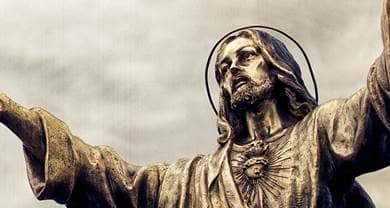- Trending:
- Pope Leo Xiv
- |
- Israel
- |
- Trump
- |
- Social Justice
- |
- Peace
- |
- Love

RELIGION LIBRARY
Lutheran
Sacred Space
Martin Luther's principle for reforming church practice was that anything not forbidden by scripture was allowed. Other reformers (like Huldrych Zwingli taught that only those things explicitly authorized by scripture were allowed. So, for example, since the Bible does not mention organs and hymn singing, Zwingli did not allow them; instead the congregation in his churches chanted psalms. Luther, in contrast, loved organs and hymns, writing many of the most famous himself. An important consequence of these different philosophies is that Lutheran churches tend to be far more ornate and decorated than Reformed churches. In general they did not go through the same period of "iconoclasm" in which statues and paintings were removed from Roman Catholic worship spaces.
Luther left the safety of the Wartburg castle, where he had been hiding following his excommunication and condemnation as a criminal, to slow down the pace of liturgical reform and quell outbreaks of iconoclasm. He returned to Wittenberg following Christmas 1521 because he felt his colleague at Wittenberg, Andreas Carlstadt, was forcing harmful and unnecessary liturgical changes and encouraging iconoclasm.
The physical set up of Lutheran worship space is strongly influenced by the twin emphases of worship: preaching the word and receiving the sacraments. A typical church will have a narthex, which is a vestibule or hallway between the outside of the building and the sanctuary, or main worship hall. In the chancel, the front area of the worship hall, one typically finds a table for the sacrament of communion, a baptismal font, and a pulpit in which the preacher stands to deliver the sermon. In the Roman Catholic Church at this time the altar was against the east wall. The priest's back was to the congregation, and so they could not hear him (in any case he was speaking Latin), nor could they see him bless the bread and wine until he lifted them up over his head. (Use of the phrase "hocus pocus" to signify magic may originate in Protestant mocking of the Latin phrase used in the Roman Catholic mass "hoc est corpus meum"-"This is my body.") Luther moved the table on which the Lord's Supper was celebrated out from the east wall of the chancel, thus, closer to the congregation, so that the minister could stand behind it facing the congregation. It was important to him that they saw and heard and understood what was happening.
Often there is a "communion rail" or "altar rail" around the chancel, at which people can kneel to pray or receive communion. In the 19th century, the pulpit was usually in the center of the chancel. In the 20th century, a "divided chancel" became common, with the table or altar in the center against the east wall, the pulpit on one side, and a lectern (for scripture reading) on the other. More recent architecture is varied, but often has a free-standing table in the center, the pulpit on one side, and the baptismal font or lectern on the other.










